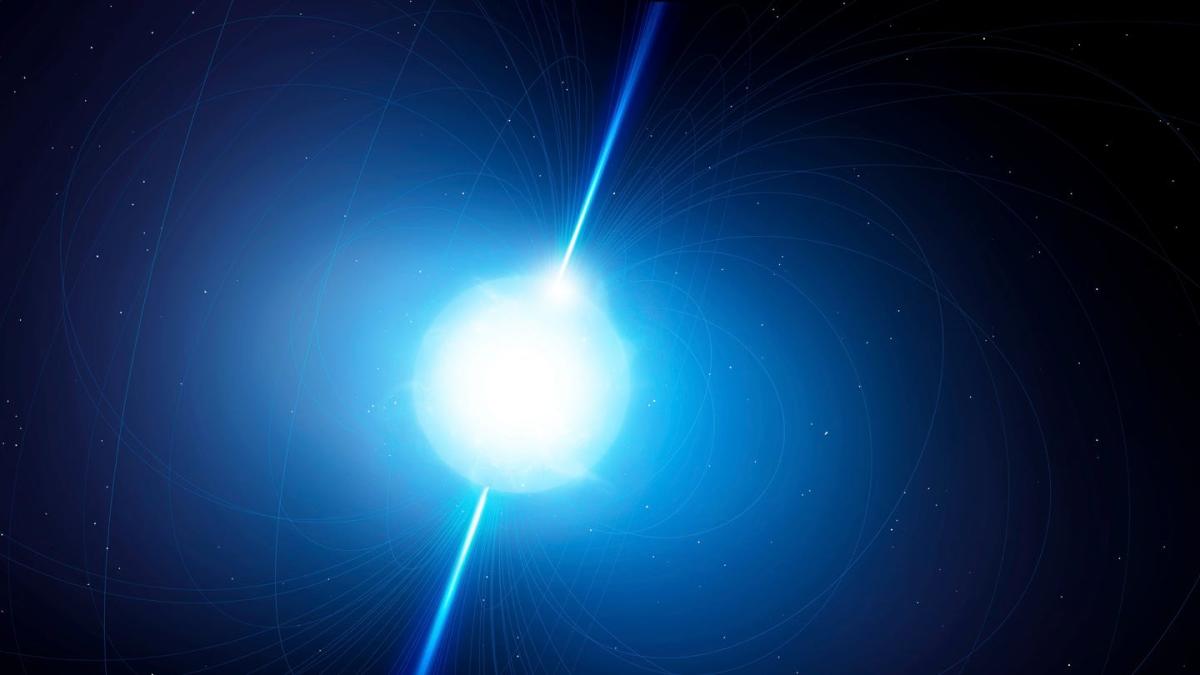-
Axions are the most compelling hypothesis for explaining dark matter, but physicists haven’t been able to confirm their existence for nearly 50 years.
-
A new study now proposes that axions should theoretically form potentially observable clouds around neutron stars due to their incredibly strange magnetic fields.
-
The authors say they’re already working on new research examining how these hypothetical axion clouds could impact the behavior of neutron stars themselves.
Today, many scientists believe that 85 percent of the content in the universe is “dark,” meaning our current understanding of physics can’t explain its existence. In 1978, two physicists independently theorized an extremely light particle known as an “axion,” named for a brand of detergent because this particle “cleaned up” some of the mathematical mess observed in the universe.
Almost 50 years later, the theory remains one of the best explanations of dark matter, but these extremely light particles have yet to be directly observed. Now a new study from physicists at the University of Amsterdam, Princeton, and Oxford have found the best location for possibly finding these ever-elusive particles—neutron stars. The results of their study, a follow-up on a previous study about how these ultra-dense stars theoretically eject axions, were published in the journal Physical Review X.
Neutron stars are some of the most intense celestial objects in the known universe, perhaps only second to black holes. The collapse core of these dead stars can pack in the mass of our Sun in a package that’s only 12 to 15 kilometers in diameter—the Sun’s diameter is 1.4 million kilometers in comparison. Because scientists believe axions can convert to light (and vice versa) when exposed to a magnetic field, this has led physicists to consider whether these dead stars, which contain magnetic fields billions of times stronger than what’s found on Earth, could be essentially a breeding ground for this hypothetical particle.
The authors’ previous work focused on how these particles escaped the confines of neutron stars and charted what paths they’d take in that interstellar journey, but this new study instead focuses on the particles left behind. Because axions are believed to have very weak interactions with other particles (hence why they’ve so far been impossible to find), they’d likely stick around the neutron star in immense numbers. In fact, there might be so many of them that they’d eventually form very dense clouds that should, at least theoretically, be detectable. The researchers estimate that the densities of axions should be twenty times higher than local dark matter densities, leading to a detectable signature.
“We…have demonstrated that axion clouds will, for most axion masses and axion-photon couplings, generate radio emission via resonant axion-photon mixing,” the physicists said in the paper. “These signatures are not only unique, but also arise rather generically, with no underlying dependence on the distribution of axions in the Universe.”
This study focuses on only single neutron stars, but it’s very common for these objects to be locked in a binary with other objects, whether other neutron stars or even black holes, so further refinement of this theory will need to include these other permutations if physicists hope to cast a wider observational net. And according to a press statement, the authors are already working to determine how these axion clouds could impact the behavior of neuron stars themselves.
Nearly 50 years after their theoretical discovery, scientists are still eager for observational evidence, but now they have a compelling place to look.
You Might Also Like


Leave a Comment